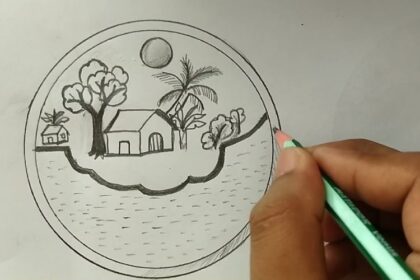Lata Mangeshkar, the legendary Indian playback singer, has left an indelible mark on the hearts and minds of countless music enthusiasts worldwide. Her melodious voice and emotive renditions have captivated audiences for generations, cementing her status as one of the most iconic figures in the history of Indian music. As you delve into the lyrics of her patriotic masterpiece, “Ae Mere Wattan Ke Logo,” you’ll uncover the depth of her artistry and the profound impact she has had on the cultural landscape of India.
The Significance of “Ae Mere Wattan Ke Logo”
“Ae Mere Wattan Ke Logo” is a poignant patriotic song that has become a symbol of India’s unwavering spirit and resilience. Composed by C. Ramchandra and written by the renowned poet and lyricist, Kavi Pradeep, the song was first performed by Lata Mangeshkar in 1963, during a special program organized to honor the Indian soldiers who had sacrificed their lives in the Indo-China war. The song’s powerful lyrics and Lata’s emotive rendition have since become a rallying cry for Indian patriotism, inspiring generations of listeners to cherish the values of unity, courage, and selfless service to the nation.
Understanding the Lyrics of “Ae Mere Wattan Ke Logo”
The lyrics of “Ae Mere Wattan Ke Logo” are a poetic masterpiece that capture the essence of India’s rich cultural heritage and the unwavering spirit of its people. The song opens with a heartfelt plea to the citizens of the nation, “Ae mere wattan ke logo” (O, people of my homeland), setting the tone for a deeply personal and emotional journey. The lyrics then go on to paint a vivid picture of the country’s diverse landscapes, from the snow-capped Himalayas to the sun-kissed shores of the Indian Ocean, evoking a sense of pride and reverence for the motherland.
As the song progresses, the lyrics delve into the sacrifices made by the brave soldiers who have defended the nation’s sovereignty, with lines like “Jahan duje ke liye jaan de dete hain” (Where they give their lives for others). The emotive language used in the lyrics resonates deeply with the listener, stirring up feelings of patriotism and a deep appreciation for the selfless dedication of India’s armed forces.
Lata Mangeshkar’s Emotional Rendition
Lata Mangeshkar’s rendition of “Ae Mere Wattan Ke Logo” is a masterclass in emotive storytelling through music. Her rich, velvety voice effortlessly captures the nuances of the lyrics, infusing each line with a depth of emotion that transcends the boundaries of mere performance. The way she modulates her tone, from the delicate and introspective to the powerful and resolute, perfectly mirrors the ebb and flow of the song’s narrative, drawing the listener into the heart of the patriotic experience.
Lata’s ability to convey the raw, visceral emotions of the song is truly awe-inspiring. Her voice trembles with a palpable sense of pride and reverence, as if she is personally bearing witness to the sacrifices and triumphs of the nation. The way she emphasizes certain words and phrases, such as “jaan de dete hain” (they give their lives) and “mera watan” (my homeland), imbues the lyrics with a tangible sense of gravity and significance, leaving a lasting impression on the listener’s heart and mind.
The Impact of “Ae Mere Wattan Ke Logo” on Indian Society
The profound impact of “Ae Mere Wattan Ke Logo” on Indian society cannot be overstated. The song has become a rallying cry for patriotism, inspiring generations of Indians to embrace their national identity and to stand united in the face of adversity. It has been performed at numerous public events, from Independence Day celebrations to military parades, serving as a powerful reminder of the sacrifices made by the nation’s heroes and the indomitable spirit of the Indian people.
The song’s enduring popularity is a testament to its ability to transcend the boundaries of time and culture. Even today, decades after its initial release, “Ae Mere Wattan Ke Logo” continues to resonate with listeners across India, evoking a sense of unity and pride that cuts across social, economic, and political divides. It has become an integral part of the country’s cultural fabric, serving as a unifying force that celebrates the diversity and resilience of the Indian nation.
Historical Context of the Song
“Ae Mere Wattan Ke Logo” was composed in the aftermath of the Indo-China war of 1962, a conflict that had a profound impact on the psyche of the Indian nation. The song’s creation was a direct response to the sacrifices made by the Indian soldiers who had fought and died in defense of the country’s sovereignty. The lyrics, with their poignant references to the “snow-capped Himalayas” and the “sun-kissed shores,” serve as a poetic tribute to the diverse landscapes and people of India, underscoring the importance of unity and national pride in the face of adversity.
The song’s release in 1963 coincided with a pivotal moment in India’s history, as the country was still grappling with the aftermath of the war and the need to rebuild its national identity. “Ae Mere Wattan Ke Logo” became a unifying force, rallying the Indian people around a shared sense of purpose and a renewed commitment to the ideals of freedom, justice, and democratic values.
Lata Mangeshkar’s Contribution to Indian Patriotic Songs
Lata Mangeshkar’s contribution to the realm of Indian patriotic songs is truly unparalleled. Throughout her illustrious career, she has lent her voice to countless anthems and ballads that have become synonymous with the spirit of Indian nationalism. From the stirring “Aye Mere Watan Ke Logon” to the rousing “Ae Mere Pyare Watan,” Lata’s emotive renditions have captured the hearts and minds of listeners across the country, inspiring them to embrace their national identity and to strive for a better, more just, and more prosperous India.
Lata’s ability to infuse each patriotic song with a deep sense of reverence and emotional resonance is truly remarkable. Her voice, which has been described as “the voice of the nation,” has the power to evoke a range of emotions, from the solemn and contemplative to the triumphant and celebratory. It is this versatility, coupled with her unwavering dedication to her craft, that has cemented Lata Mangeshkar’s legacy as one of the most iconic figures in the history of Indian music.
The Legacy of “Ae Mere Wattan Ke Logo”
The legacy of “Ae Mere Wattan Ke Logo” extends far beyond the confines of the song itself. It has become a symbol of the indomitable spirit of the Indian nation, a rallying cry for unity, courage, and selfless service to the motherland. The song’s enduring popularity and its ability to transcend generational and cultural boundaries are a testament to its enduring relevance and the profound impact it has had on the collective consciousness of the Indian people.
As you listen to the stirring lyrics and Lata Mangeshkar’s emotive rendition, you can’t help but be swept up in the sheer power and majesty of the song. It is a timeless masterpiece that captures the essence of what it means to be Indian, to love one’s country, and to be willing to sacrifice everything for the greater good. The legacy of “Ae Mere Wattan Ke Logo” will continue to inspire and uplift generations of Indians, serving as a constant reminder of the values that have made India a truly remarkable and resilient nation.
Conclusion
In the annals of Indian music, the name Lata Mangeshkar stands tall as a beacon of artistic excellence and unwavering dedication. Her rendition of “Ae Mere Wattan Ke Logo” is a testament to her unparalleled talent and her ability to captivate audiences with the sheer power and emotion of her voice. Through this patriotic masterpiece, Lata has left an indelible mark on the cultural landscape of India, inspiring generations of listeners to embrace their national identity and to cherish the values of unity, courage, and selfless service.
As you reflect on the profound impact of “Ae Mere Wattan Ke Logo,” it is impossible to ignore the immense contribution that Lata Mangeshkar has made to the world of Indian music. Her legacy will continue to inspire and uplift, serving as a constant reminder of the transformative power of art and the enduring spirit of the Indian nation.
If you’ve been moved by the powerful lyrics and Lata Mangeshkar’s emotive rendition of “Ae Mere Wattan Ke Logo,” consider sharing this article with your friends and family. Together, we can celebrate the enduring legacy of this patriotic masterpiece and honor the remarkable talent of one of India’s most beloved musical icons.





